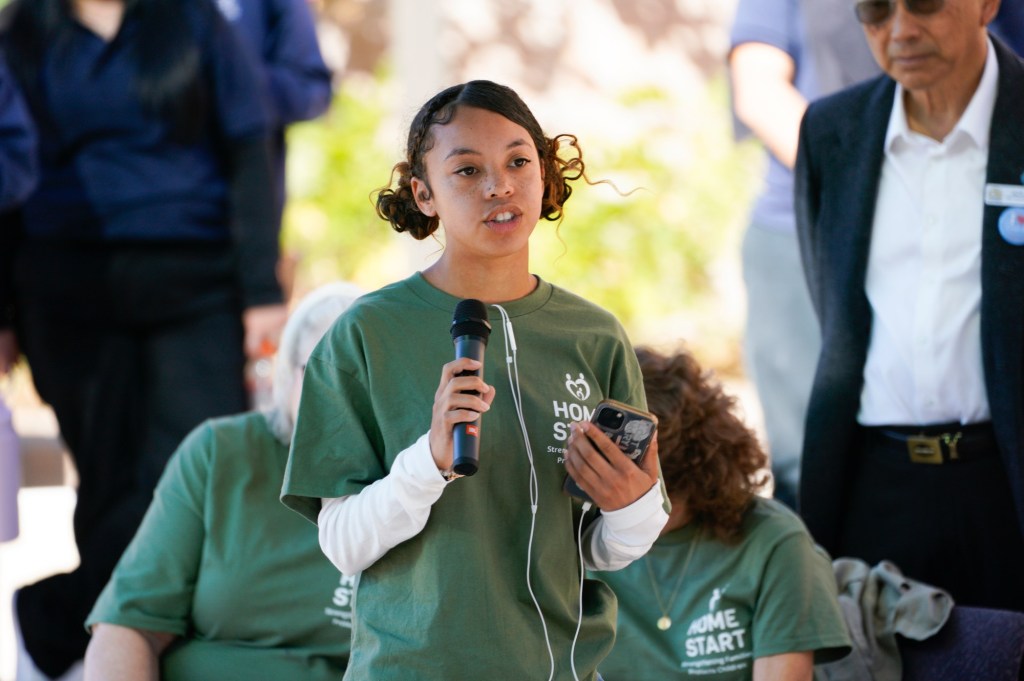For years, San Diego’s youth homelessness response felt like trying to build a house without a blueprint. Everyone was working hard, but without a shared plan, the pieces didn’t fit. It wasn’t a lack of effort, but of connection. Today, we’re building with purpose: a shared vision, a coordinated plan and young people at the center of the design.
Most headlines portray homelessness as impossible to solve. Yet here in San Diego County, something remarkable is happening. After years of rising numbers, youth homelessness has finally decreased. This is no coincidence. It’s the result of strategic collaboration, coordination and investment in solutions that work.
Through the San Diego Youth Homelessness Consortium, over 50 organizations and public agencies are united around one goal: ending youth homelessness. Young leaders with lived expertise sit at the same tables as policymakers and funders. Service providers share resources instead of competing. Together, we’ve built a system that meets young people’s needs quickly and with dignity. The result is a regional model showing the nation what’s possible when collaboration replaces chaos and competition.
Youth homelessness looks different from what most people imagine. It’s often hidden — in the back seat of a parked car, in an overcrowded living room or in a text message to a friend asking for a place to stay. Transition-age youth — those from 12 to 24 — are among California’s fastest-growing groups experiencing homelessness. Yet most systems were designed for adults, not for teenagers trying to finish homework or young adults piecing together rent from part-time jobs.
When a young person loses stable housing, the impact ripples far beyond where they sleep. It can mean falling behind in school, losing a job, or drifting away from support networks that anchor them during formative years. At an age meant for growth and exploration, too many young people are forced into survival mode, robbing them of their potential and a life full of joy and opportunity.
Early intervention works — and it’s the most effective, cost-efficient way to end homelessness for good. Nearly half of adults experiencing chronic homelessness first lost housing before age 24. If we stop youth homelessness now, we don’t just change lives today — we prevent half of tomorrow’s homelessness from happening at all.
Across the region, the system is coming together — brick by brick. Drop-in centers offer safe spaces and support. Housing navigators connect youth to shelter and permanent housing faster than ever. Employment, education and mental health resources give young people the foundation they need to maintain stable housing.
By leveraging the strengths and expertise of each organization, this coordinated network is making a measurable difference. Over the last year, more than 2,600 young people accessed critical housing services across San Diego County. Organizations like the YMCA of San Diego County’s Youth & Family Services branch — alongside dozens of community partners — are helping build this compassionate system through drop-in centers, housing programs, counseling and employment support.
But now, just as we’ve laid the foundation and begun building upward, the ground beneath us is starting to shift. Even small changes in federal funding threaten to destabilize what our community has worked years to build. Every pillar matters, and without consistent funding, the carefully constructed system that’s finally reducing youth homelessness could collapse.
The choice is ours. We can let momentum stall — or we can finish what we started. That means urging policymakers to sustain investments in youth housing and prevention, encouraging philanthropy to continue bridging gaps, and ensuring every community member refuses to accept youth homelessness as inevitable.
San Diego has built a model that works through genuine collaboration and targeted investments. It shows what happens when we treat youth as futures to protect, not problems to manage. We have the blueprint to end youth homelessness. The only question is whether we, as a community, have the will to see it through.
This November, the Y is leading the Solidarity Journey, a countywide campaign to raise awareness and inspire action to end youth homelessness. Learn more or get involved at sojocali.org.
Esquivel is vice president of social services at the YMCA of San Diego County and lives in Encinitas. Esposit is director of impact communications for the YMCA of San Diego County’s Community Support Services branch and lives in San Diego.
